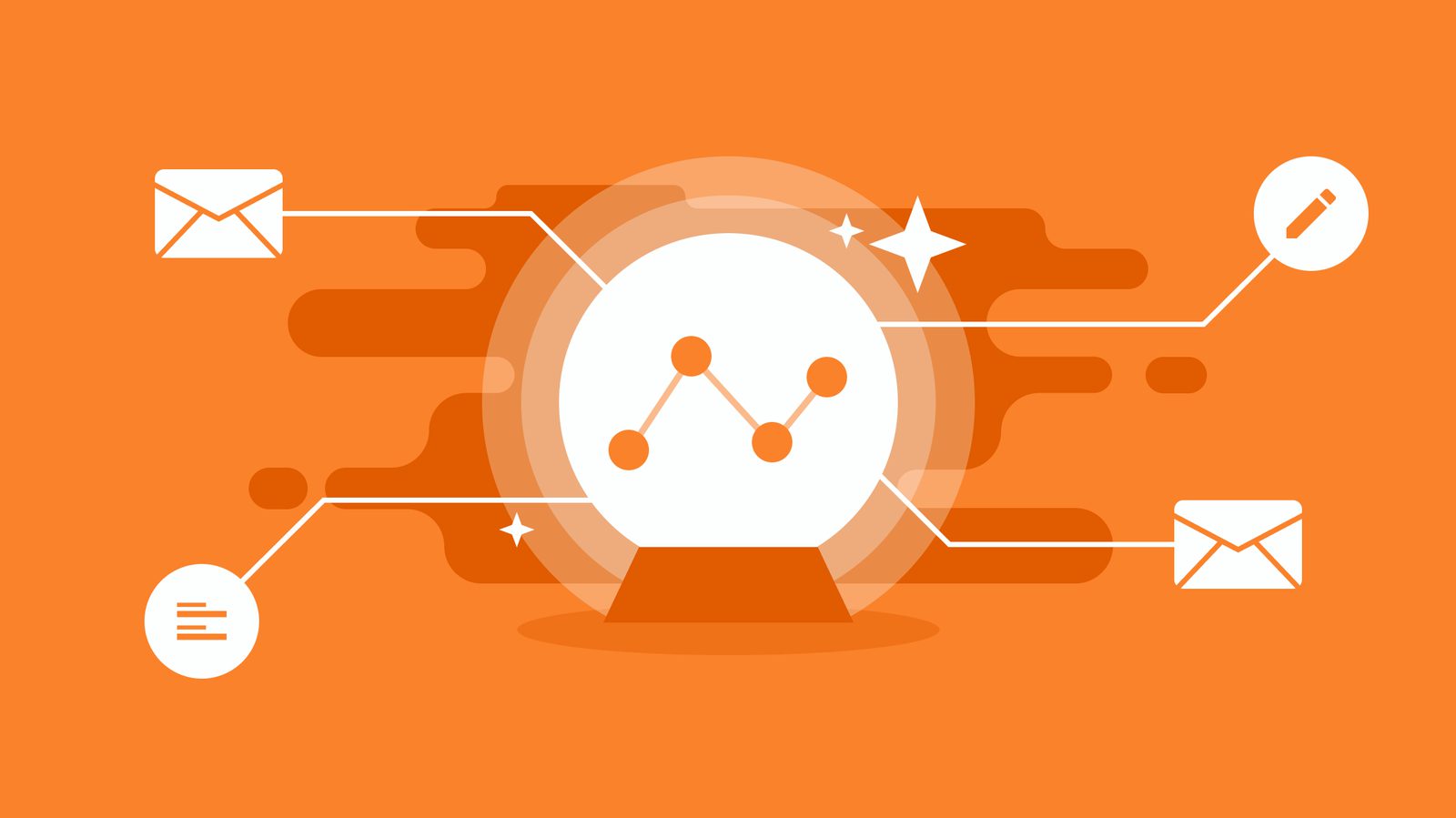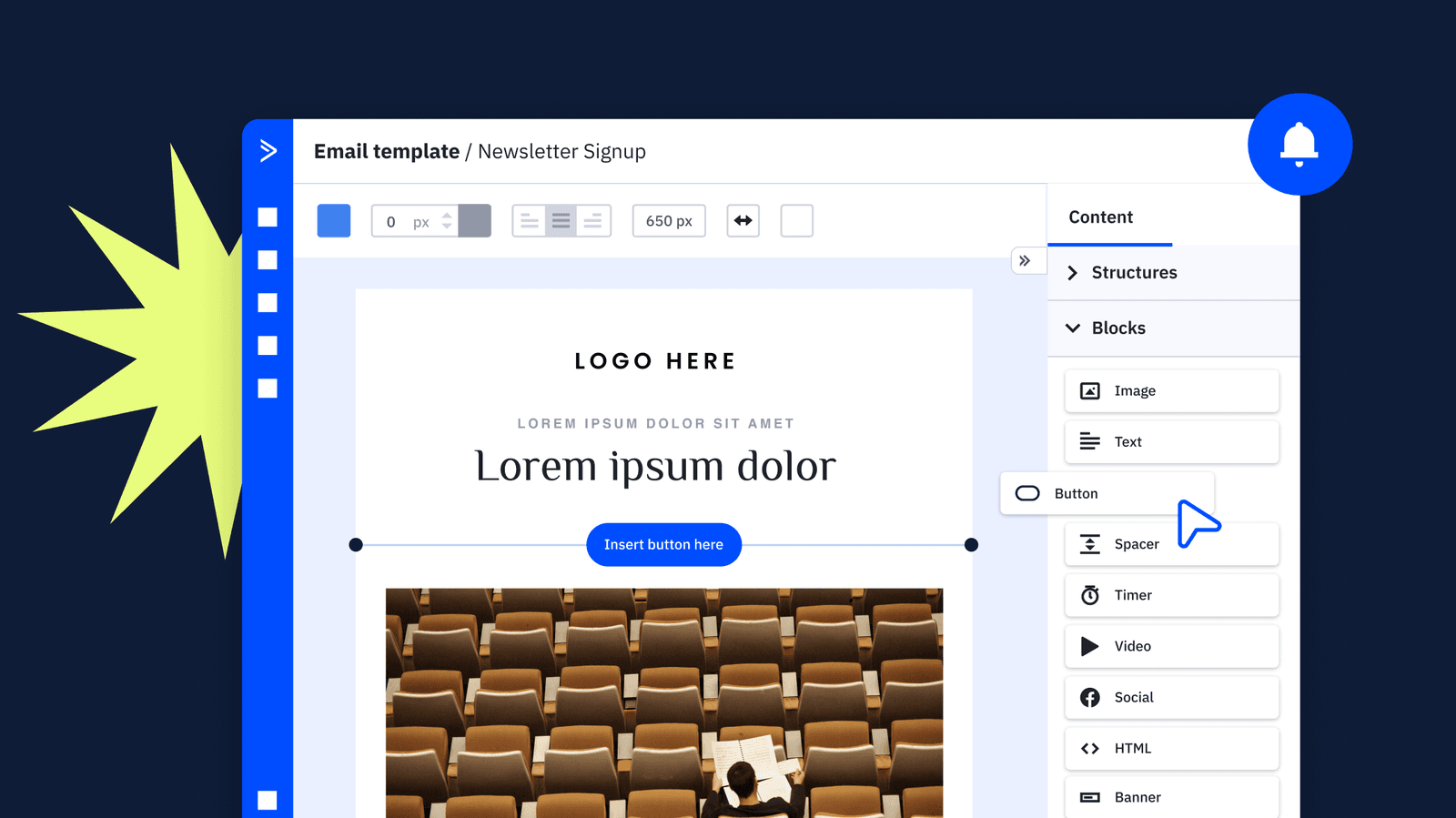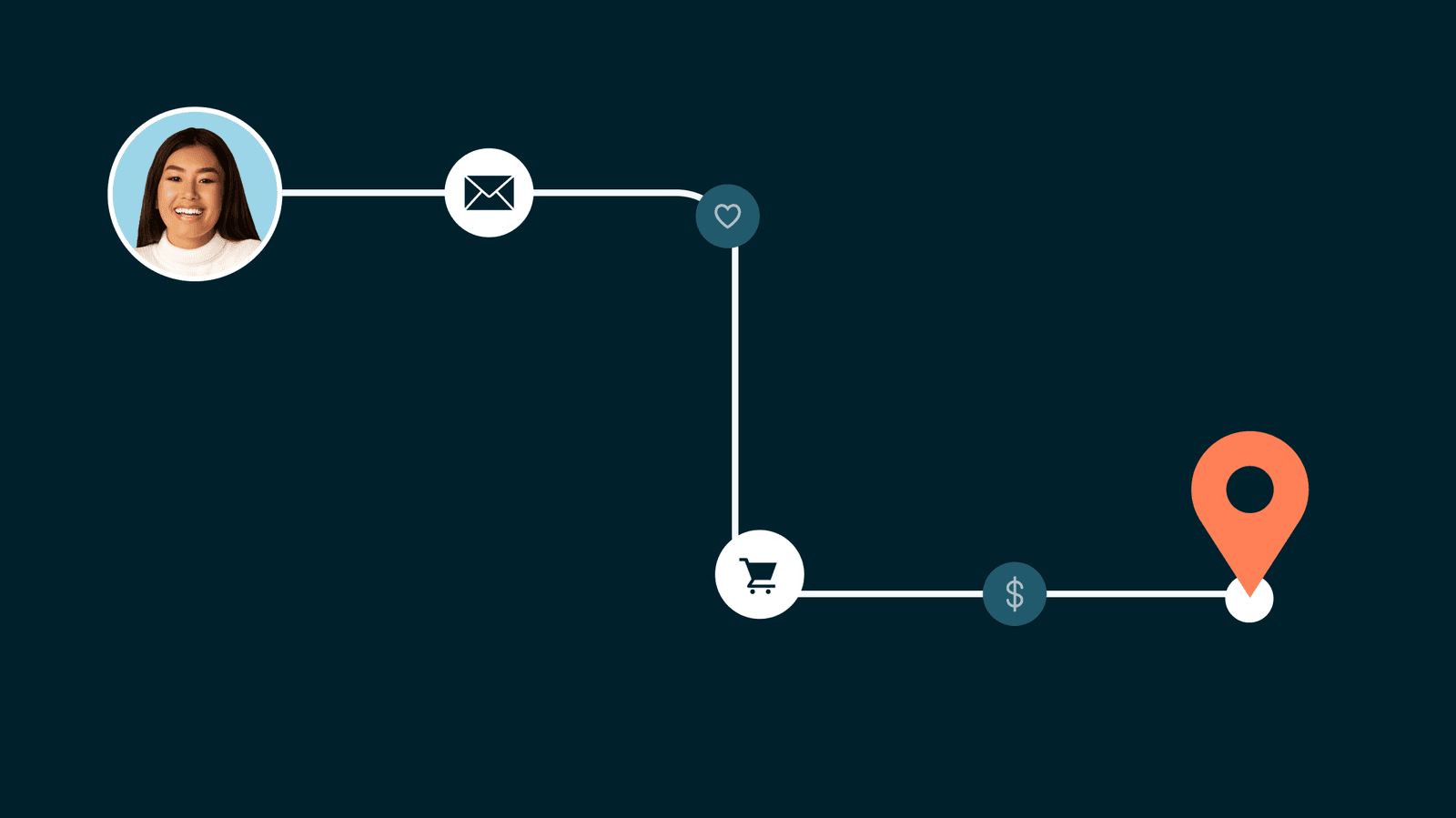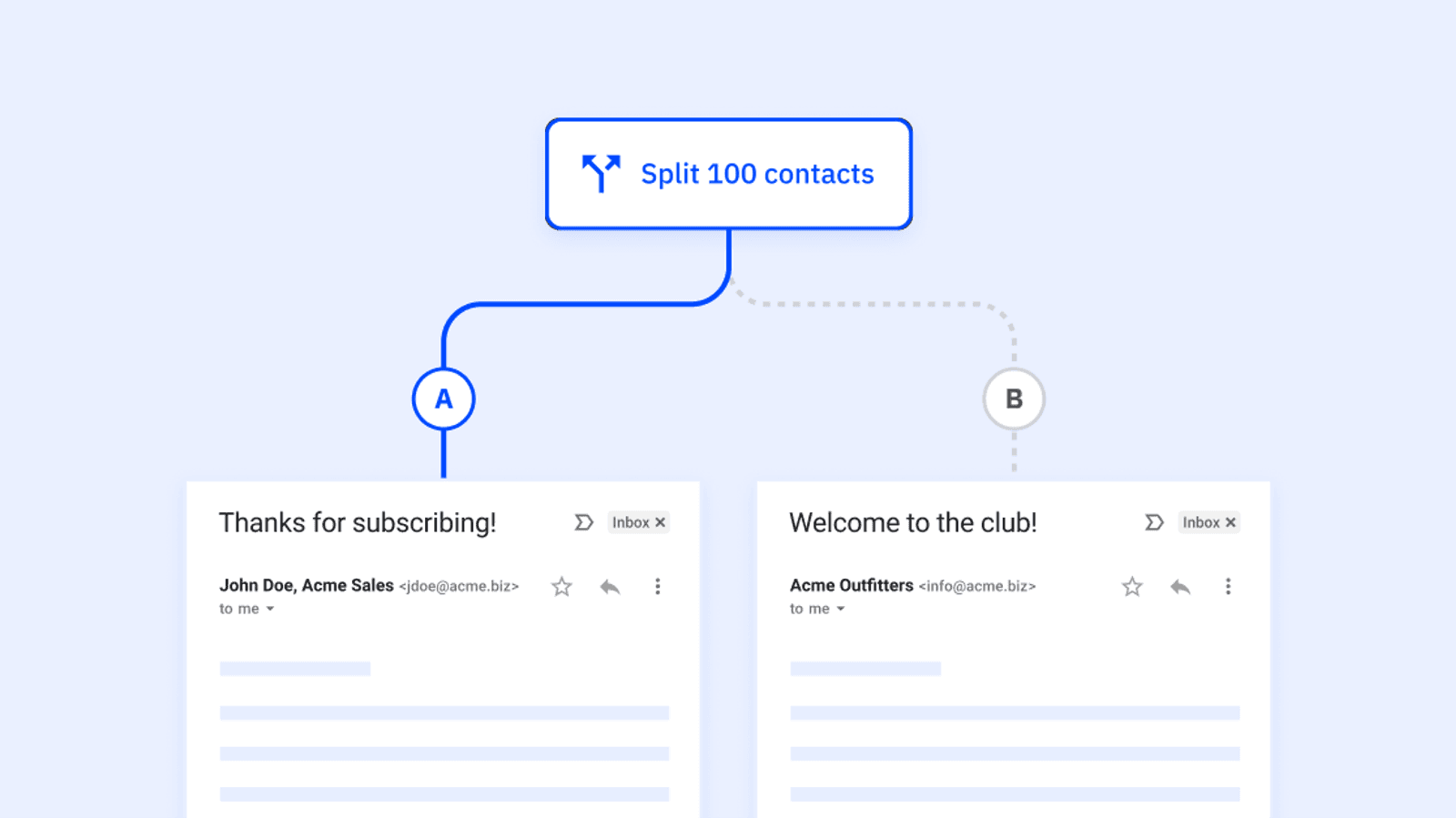Marketing automation and landing pages are two of the most powerful tools in your digital marketing toolbox.
They’re a huge benefit to any marketing strategy on their own, simplifying your lead generation and lead nurturing efforts. However, combining them into one process (landing page automation) can have an even bigger impact on your lead generation and nurturing efforts.
What is landing page automation?
Landing page automation is the process of setting up a landing page so that when a visitor completes your landing page form, their information is automatically sent to your CRM, email automation platform, or both.
Landing page automation gets rid of manual tasks like:
- Contact and data entry
- Sending individual emails
- Delivering a landing page offers 1 contact at a time
- Putting contacts in specific workflows
- Segmenting contacts or adding contact tags 1 by 1
You’ll have more time to focus on other areas of your business, and you won’t have to worry about human error.
So how do you use landing page automation? This post will cover the 3 steps needed to add landing page automation to your marketing strategy:
- Create a landing page
- Integrate your landing page with your marketing automation platform
- Test to make sure it works
Landing Page Automation 101
1. Create a landing page
Landing page builders like these make it simple to create a landing page:
Each platform’s pricing and plans might differ, but the general process for creating a landing page is the same:
- Pick a landing page builder
- Design your landing page (for more information on writing a high-converting landing page, check out this guide!)
- Connect your page to your domain (each landing page builder has instructions on how to do this)
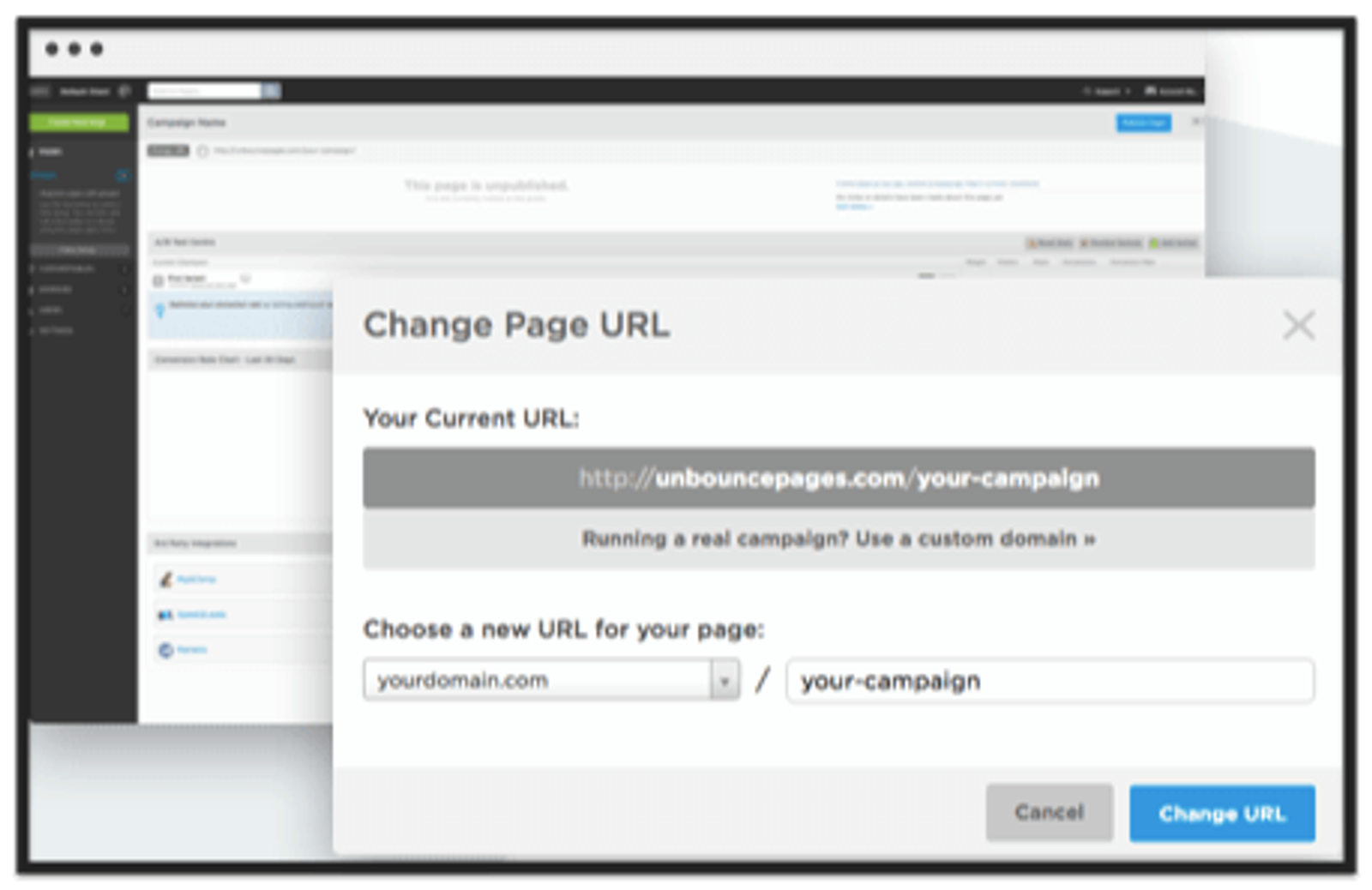
4. Publish your landing page as a standalone page, or embed a form on your site!

At their core, landing pages are standalone pages designed to funnel traffic toward a specific goal for a single marketing campaign. They generate leads from web traffic through conversion.
For more information on how landing pages work, check out this article.
You don’t need a dedicated landing page builder to create a landing page. All you need is a form with a call-to-action (CTA) and a webpage!

2. Integrate your landing page with your email marketing or marketing automation platform
Once you launch your landing page, it’s time to connect your email marketing or marketing automation tool.
Think of an integration as a bridge between two software tools that lets pieces of information flow back and forth. The information passed from one tool triggers an action in the other.
There are 3 types of integrations:
- Direct integration (also called a native integration): This integration is built by the software providers, and is set up by entering your API keys (or proof that you own a license) from one platform into the other and vice versa. A list of ActiveCampaign integrations is available here!
- 3rd party integration: This type of integration uses a middleware like Zapier or PieSync as a translator. The information flows from one platform into the middleware, and then into the other software.
- API integration: This type of integration involves coding yourself, and is commonly called a “custom integration”. API integrations are designed for more complex info-sharing, or as an option if a direct or 3rd party integration is unavailable.
The integration between landing pages and email marketing/automation software passes information in one direction: from your landing page to your email marketing platform.
When a contact submits your landing page form, their information syncs to the marketing automation software.
Once your email service provider (ESP) receives the information, the platform triggers a new action like a chain of dominos falling. The automation trigger is “submits a form” but the resulting action will depend on your marketing strategy, offer, or campaign.
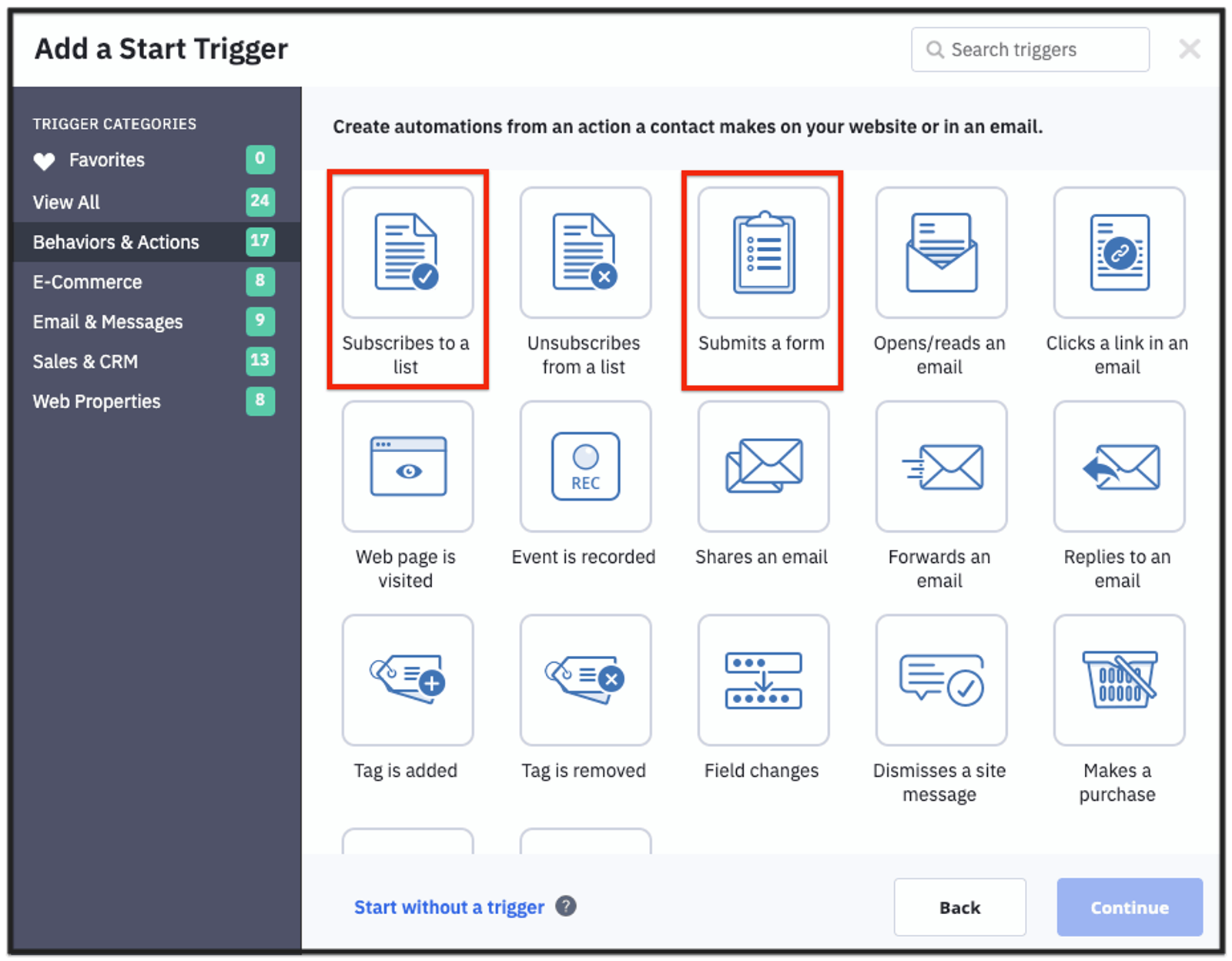
These actions might be:
- Contact creation
- Contact update (if they already exist in your system)
- Autoresponder send
- CRM deal creation
- Enter into an email nurturing sequence
- Segment the contact

Every email marketing or marketing automation platform is different and may have different options for what you can automate after a landing page conversion.
Your specific campaign and landing page offer will be the biggest factors in deciding the resulting automation. If your landing page offers an ebook about jazz piano, your automation should send them the ebook and a few follow-up emails — not add them to your “Basket Weavers Weekly” email newsletter list.
3. Test to make sure it works
All that’s left is to try your landing page out yourself!
Use an alternate email address or a test email address to test your landing page. Fill out the form, click the CTA button, and make sure everything happens the way you want it to.
- Double-check your “thank you” page. When a visitor converts, thank them for converting. Conversion isn’t the end of the customer experience — it’s the beginning.
- Next, check your email inbox. If your offer doesn’t land there, look to your form and email marketing platform for broken connections.
- Look at your email marketing tool. Did it create a new contact or update an old contact? Is the information syncing to the right places? Make sure the things you want to happen, happen.
- Pay attention to the presentation. Make changes according to copy, formatting, display, or anything else that doesn’t look quite right.
If you make changes to any part of the process, resubmit the form and go through the testing process again until everything works.
Landing page automation as a process
Landing page automation brings together 2 powerful digital marketing tools for 1 strategy, combining your lead generation processes and email marketing.
The process of automating a landing page is straightforward:
- Create a landing page
- Integrate your landing page
- Test to make sure it works
But don’t stop there!
The contacts you’ve just converted into leads are more likely to move forward with you than contacts who have been on your list for a while. Take advantage of the “sign-up momentum” and keep the conversation going!
According to First Impressions Email Study:
- Only 39% of brands send a welcome email
- 41% of brands don’t send an email within 48 hours of sign-up
- 27% of brands don’t send an email in the first 3 weeks after sign-up
Take your landing page automation a step further and create a welcome email series. To learn more about how to create a welcome email series (and get an example you can steal), click here.
Landing page automation creates a situation where your email marketing, CRM, and landing page tools work together to take your marketing processes to the next level.

